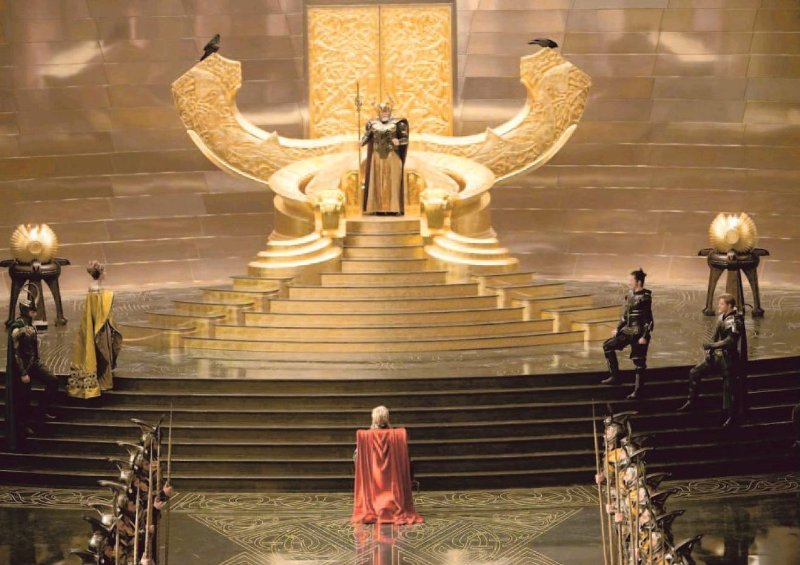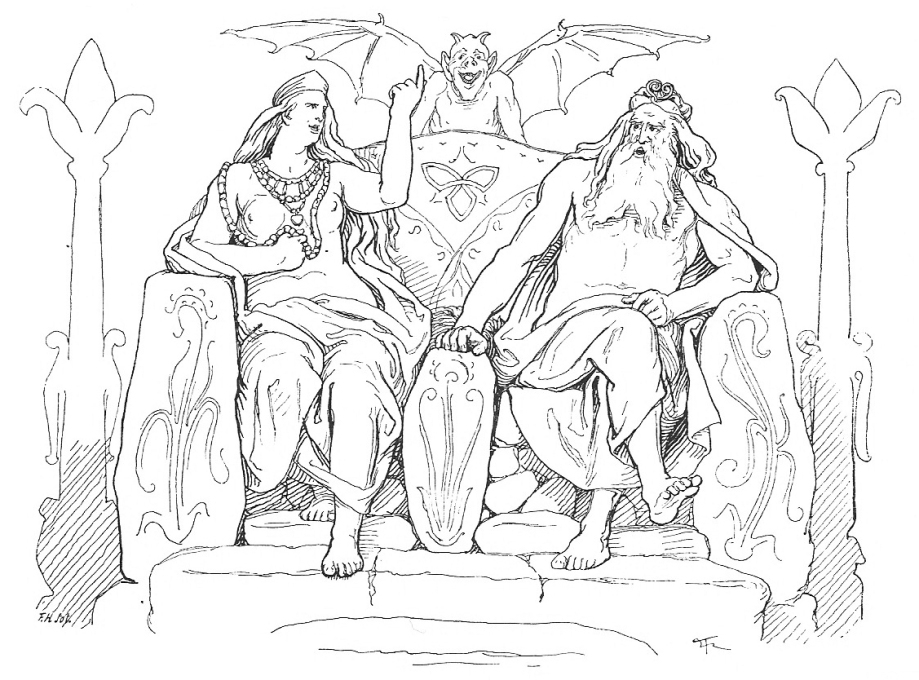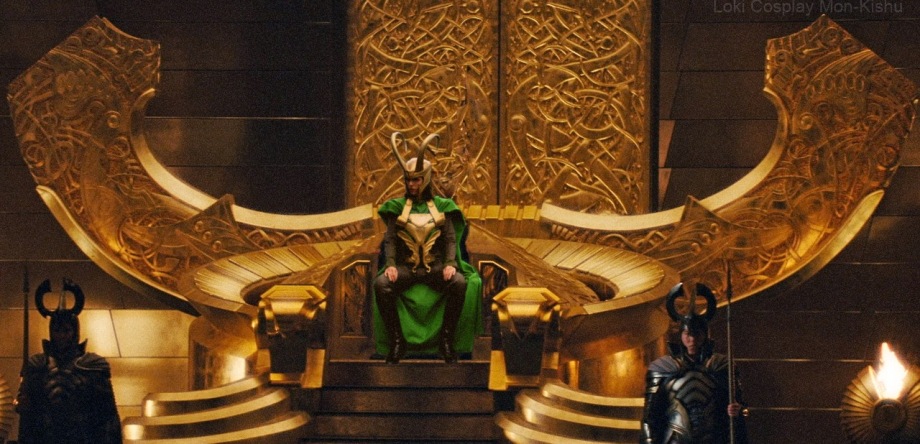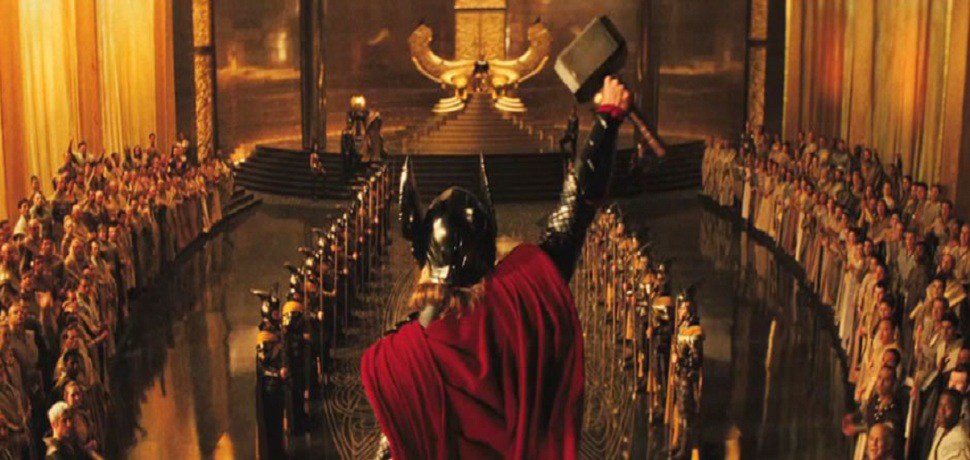This past week marked the five-year anniversary of Thor’s arrival on the silver screen, with Marvel’s Thor debuting on May 6, 2011. It’s an anniversary worth celebrating, with Captain America: Civil War recently debuting to audience and critical acclaim (even without an appearance from Thor), and with Thor: Ragnarok set to begin production in Australia next month, it’s a good time to remember the film that set Thor on the path to superheroism and superstardom.
The featured image, taken from a moment early in the film, shows Thor and all of Asgard celebrating as a ceremony is about to begin which will transfer sovereignty over the kingdom from Odin to Thor, who will be the new King of Asgard. The coronation is interrupted, however, when Odin detects a trio of frost giants attempting to retrieve an old weapon of their race, the Casket of Ancient Winters, from Odin’s Vault. Thor, not yet king, takes his adopted brother Loki, trusted friend Sif, and long-time companions Fandral, Volstagg, and Hogun, to take punitive action against the frost giants on their home planet of Jotunheim. The six warriors are nearly killed before Odin and a small army appear to invoke the old truce between the two races, preventing all-out war. But Thor has gone too far, acting rashly, and so his father Odin strips him of his power, his armor, and his advanced weapon Mjolnir and sends him to Midgard, the planet Earth, to prove himself worthy of his heritage, his people, and his father. In the end, as I have discussed previously, Thor must show himself to be concerned with the well-being of others above his own, valuing life and willing to sacrifice his if necessary, to become worthy of Mjolnir and Asgard.
One of the most majestic features we see of Asgard, aside from the incredible spectacle of the fantastic Realm Eternal itself, is the throne of Odin, and it’s featured heavily throughout the film, as of course it should be in a film about who should be ruler of the Aesir. What isn’t mentioned explicitly, but is still quite important in establishing the film’s connection to the Germanic mythology upon which Stan Lee, Larry Lieber, Jack Kirby, and so many more have based their tales of Thor the superhero, is that this throne has a name, and is quite important for a variety of reasons.

The throne is called Hliðskjálf (“HLITH-skyahlf”; there aren’t really any English words like it for the purposes of pronunciation). The literal translation is something like a high place that’s very open, evoking an image of a mountaintop. Whether the word is referring to this high place, or a throne set at a high place, or something else, is difficult to say. Because of Odin’s use of magic called seidr in which his consciousness leaves his body to roam about the cosmos, it’s quite possible that the word is more a metaphor than a literal name for a place at the top of a mountain: perhaps from Odin’s throne, Odin sees all, and that’s all that matters. It’s worth pointing out that in one story, Frigga is included when Odin sees events happening outside of Asgard; in another, Freyr sits in Hliðskjálf and sees a woman he wishes to marry in a land far away. The throne is mentioned several times, and I’m really not sure whether the height part is intended literally or figuratively.
Kenneth Branagh and Marvel, however, have clearly made a choice: this is a throne, in a room, from which Odin can see the nine realms. This helps explain how he knew of the frost giants in the vault, and how Loki was able to keep track of Thor’s progress in Midgard: once he had possession of Hliðskjálf, he could see Thor in the SHIELD installation in New Mexico and tell him (falsely) that Odin had died; he could continue to track Thor and direct the Destroyer to end the threat Thor posed to Loki’s own rule of Asgard forever. And there are other clues, of course, like Odin’s ravens Huginn and Muninn (“Thought” and “Memory”) alighting upon them, but it’s pretty straightforward: this is the famous High Seat of Odin.

What point, then, in bringing up Hliðskjálf? In Marvel’s Thor, Loki sees the high seat as a seat of power, and uses it to achieve petty, foolish ends. If he had not come to Thor at SHIELD to twist the knife in his adopted brother’s wound, Thor would not have realized when Sif, Fandral, Volstagg, and Hogun came to Midgard that Loki was manipulating all of them. The knowledge gleaned from an all-seeing magic chair is only compatible with someone who has the wisdom to know when, if ever, to use that knowledge, and what best to use that knowledge for, as Odin demonstrates when he teaches Thor and Loki about using power wisely when they are children, and tries to tell the petulant adult Thor both before and after the incident with the frost giants on Jotunheim. Just as Thor is too quick to anger, too quick to use violence, Loki is too selfish, and wishes to achieve his own ends too quickly. Only the worthy path, using knowledge, power, strength, cunning, and bravery all in the right measure, can truly lead one to be a king.
Thor seems to have learned that lesson well. Loki did not. And the consequences continue to reverberate through the Marvel films, both with and without Thor, five years later.


[…] years later, Odin and Frigg were sitting in Hliðskjálf scouting the nine realms when their gaze fell upon their former foster sons. Odin was impressed to […]
LikeLike